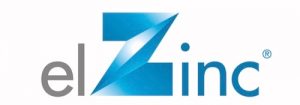
elZinc®: A sustainable building material paving the way for a greener future
The construction industry has been increasingly focused on sustainability and eco-friendly practices in recent years. As architects and builders seek alternatives to traditional materials, elZinc has emerged as a reliable and environmentally conscious choice. In this post, we will explore the benefits of elZinc as a sustainable building material and its potential to transform how we construct our buildings.
The versatility of zinc
Zinc is a zinc-based alloy that offers remarkable versatility in architectural applications. It can be used for roofing, cladding, rainwater systems, and other exterior or interior design elements. With its wide range of finishes, textures, and colors, elZinc allows architects and designers to unleash their creativity while maintaining a commitment to sustainability.
Longevity and durability
One of the standout features of elZinc is its exceptional durability. Buildings constructed with elZinc can withstand harsh weather conditions, including heavy rainfall, extreme temperatures, and UV radiation. Unlike some other materials, elZinc does not rust over time, making it an excellent choice for residential and commercial structures.
Recyclability
One of the key advantages of elZinc is its recyclability. At the end of its lifespan, elZinc can be recycled without losing its original properties. This closed-loop recycling system minimizes waste and reduces the demand for virgin materials, making it an ideal choice for sustainable construction.
Low environmental impact
When compared to building materials like concrete or aluminum, elZinc stands out with its significantly reduced environmental impact. Zinc is a naturally occurring element, and its extraction process requires less energy than other metals. Additionally, elZinc’s long lifespan and ability to be recycled further minimize its overall environmental footprint.
Certifications and green building standards
elZinc is committed to sustainability and has obtained various international certifications and green building standards, including ISO 14001, ISO 50001, ISO 14064-1:2018, as well as the ISO 14067:2019 certification related to Carbon Footprint. These certifications demonstrate elZinc’s dedication to reducing its environmental impact and ensuring that buildings using elZinc contribute to sustainable development. Furthermore, elZinc’s range of products can contribute to gaining up to seven points in the LEED certification program, further highlighting its commitment to green building practices.
In summary, as the world becomes increasingly conscious of the need for sustainable building practices, materials like elZinc are becoming more popular. With its versatility, durability, energy efficiency, recyclability, and low environmental impact, elZinc offers a compelling solution for architects and builders committed to constructing greener, more sustainable buildings. By integrating elZinc into their projects, industry professionals can make a positive contribution to both the environment and the future of construction.

